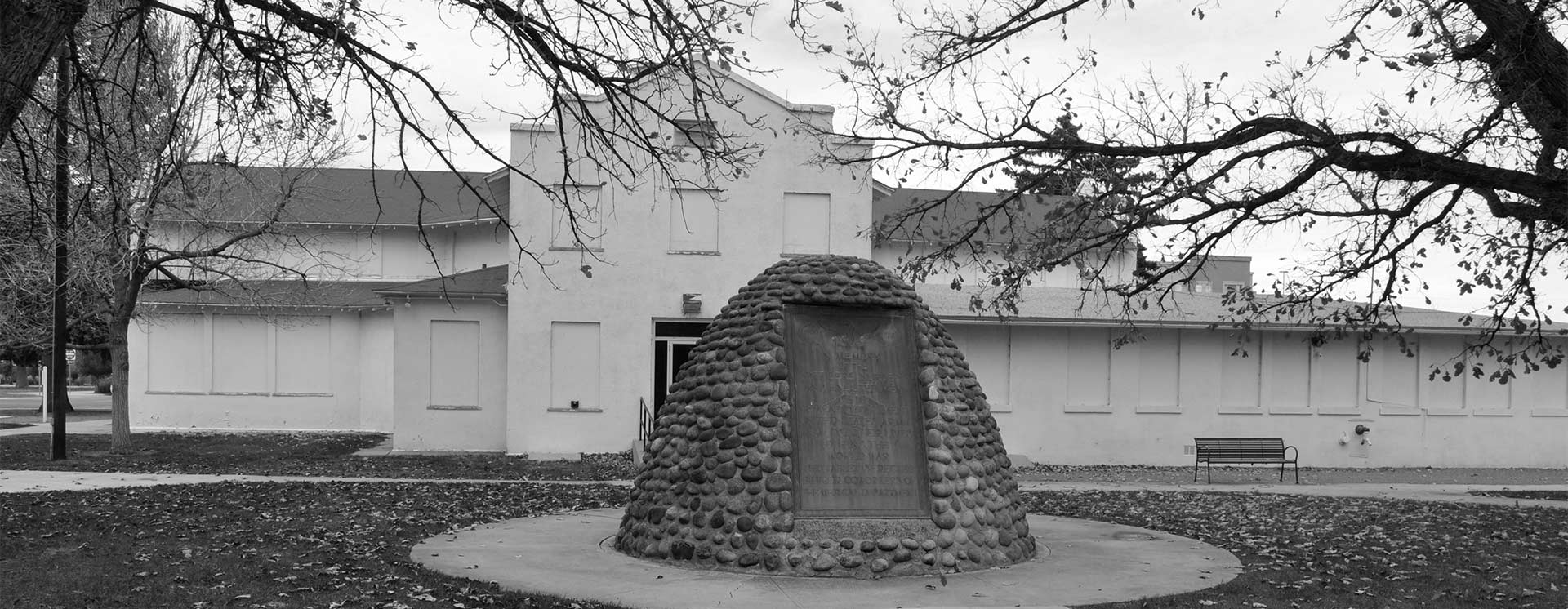
World War One Sites - The NETWORLD Database
Entrance gate, building and camp cemetery of the former Gmünd (-Neustadt) refugee camp, Lower Austria, Austria
Austria-Hungary commissioned the construction of a refugee camp in 1914 that was one of the largest of the monarchy. Around 200,000 refugees from all parts of the monarchy were accommodated here during the course of World War One, and around 30,000 people also found their last resting place in the camp cemetery that still exists today. The creation of Gmünd-Neustadt was based on the former refugee camp.
Austria, Lower Austria
Type of WWI-heritage
- Refugee camp
- Cemetery
Dimensions
The area of the former Gmünd refugee camp consists of around 55 hectares.
State of repair/preservation
The main entrance gate of the refugee camp still exists and together with the cemetery is supervised and upkept by the City of Gmünd.
Historical WWI Context
Millions of people were forced to leave their homelands with the outbreak of World War One in 1914. They fled from the fighting or were forcefully evacuated and accommodated elsewhere in the hinterland. Soon after the responsible authorities in Vienna took the decision to construct a refugee camp in the area of the current Gmünd-Neustadt, planning work was initiated for the “settlement” that had been designed on the drawing board. Because agreement had been reached with the land owners for preliminary lease in December 1914, construction was able to start on 15 December on the area consisting of around 55 hectares. Constructing the camp was carried out as rapidly as the planning work – the wooden barracks were literally stamped out of the ground. The camp buildings were initially mainly of wood because the authorities expected that the war would last just a few months, or at the most one to two years. The durability and resilience of the barracks were correspondingly poor. After a construction period of just a few weeks, the first people took up accommodation in this refugee camp that was one of the largest in the Austro-Hungarian monarchy in January 1915. Around 200,000 refugees from all regions of the monarchy were accommodated here during the war.
Due to the illness and disease that repeatedly broke out in the camp, a hospital was set up that with around 2,500 beds had even more patients than the Vienna's current General Hospital (AKH).
However, thousands of refugees in the Gmünd camp died due to these epidemics and diseases. The precise number of deaths can no longer be reconstructed due to lack of documentation, but it is assumed that around 30,000 people found their last resting place in the still existing camp cemetery. The number of dead also included hundreds of children and babies. From 1915 to 1917, 484 children died before reaching their first year of age due to complications from measles alone. The dead were carried through the “Birkentor” to the camp cemetery and buried there.
The refugee camp constructed in 1914 formed the basis for Gmünd-Neustadt after 1918. Both residential homes for camp hospital nurses still exist today.
State of legal protection
The buildings are not heritage-protected.
Owner
A large part of the former camp building is now privately owned. The archway of the former refugee camp is however owned by the City of Gmünd.
Kind of cultural use of WWI
A tour through the former refugee camp to the historic showplaces and still existing buildings from the period of World War One takes around 1.5 hours and is free of charge.
Information and bookings for groups can be obtained from the City of Gmünd: Tel. +43/2852/52506-207.
The cross-border theme trail “Stories of Two Towns” leads through Gmünd-Neustadt and relates the common history between Gmünd and today's České Velenice.
The pedestrian crossing in the Bleyleben is an ideal starting point for a tour through the Neustadt.
Opening
Further information:
www.gmuend.at/de/Gmuend-Neustadt_ehemaliges_Fluechtlingslager_2
Entrance Fee
Entry to the camp cemetery is free. Further information: www.gmuend.at/de/Gmuend-Neustadt_ehemaliges_Fluechtlingslager_2
Information regarding cities, villages, other touristic attractions (non-WWI) nearby
Further information:
Waldviertel region: www.waldviertel.at
Burg Heidenreichstein: www.heidenreichstein.gv.at
City of Zwettl: www.zwettl.gv.at/Bildung_Kunst_Kultur/Bildungseinrichtungen
Erzherzog-Franz-Ferdinand-Museum Artstetten: www.schloss-artstetten.at
Accomodation
Further information:
Gmünd:www.gmuend.at/de/Tourismus/Unterkuenfte_A-Z_
Region Waldviertel: www.waldviertel.at
Public Transport
Further information:
ÖBB: www.oebb.at
Further information sources
Publications:
Manfred Dacho, Franz Drach & Harald Winkler, Am Anfang war das Lager. Gmünd-Neustadt, Weitra (2014).
Maria Ostheim-Dzerowycz, Gmünd. Ein Lager ukrainischer Flüchtlinge in Österreich während des Ersten Weltkrieges, in: Ilona Slawinski & Joseph P. Strelka (Hg.), Die Bukowina. Vergangenheit und Gegenwart, Bern u. a. (1995), S. 73–89.
Markus Schmoll, Das Flüchtlingslager in Gmünd. Transformation und Authentizität, in: Österreichische Zeitschrift für Kunst und Denkmalpflege, Ort - Erinnerung - Denkmal. Relikte des Ersten Weltkriegs, Heft 3/4 (2015), S. 292–302.
Other heritage sites nearby
Museums Private Collections
Entrance gate, building and camp cemetery of the former Gmünd (-Neustadt) refugee camp, Lower Austria, Austria
48.77169393811806 14.985660622316913 fileadmin/res/images/layout/standar-marker.pngLocation

